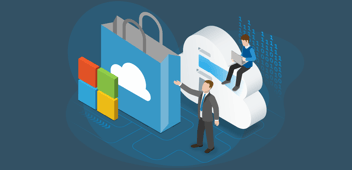Incorporating cloud collaboration technology must go beyond the obvious operational benefits. It must also add additional value to other business areas and stand up to the procurement test.
When looking at Microsoft 365, there are many costs that stack up beyond the initial licensing fees, which are increasing. Many of these are hidden or go unnoticed as your organization scales business operations.
The result? A Microsoft 365 Total Cost of Ownership (TCO) that far exceeds the original forecast and a downturn in your Return on Investment (ROI) over time. Therefore, I propose the following ten tips to address the hidden Microsoft 365 costs and reduce your Microsoft 365 TCO.
Reallocate unused licenses
Optimizing licenses alongside rapid adoption means managing the constantly changing needs of users. For larger or growing organizations, this can be overwhelming to constantly track assigned and relevant licenses. In many cases, organizations often have more enabled units than consumed units. Reallocating them helps you control excess licensing costs.
Discover SharePoint Site collections near storage limit
Making storage easily available for all end users requires close monitoring of estimated and projected storage costs. Depending on your Microsoft 365 subscription, your storage capacity threshold will increase by default. To prevent this from happening, you should identify and address your 90% capacity alerts straight away and at scale.
Identify flows requiring a premium license
If Microsoft 365 is the engine of your organization, Power Automate is a turbocharger. But with so many moving parts, it can be easy to rack up accidental and unnecessary costs. Because Power Automate is a pay-as-you-go monthly subscription, Flows can use standard and premium components such as connectors, custom connectors, triggers, and the common data service, which can incur extra costs. Identify Flows using premium licences can be the key to a significant matter of expense.
Locate users who are “over-licensed”
If we investigate that notion of irrelevant licensing use a little deeper, we will understand that Microsoft 365 licenses come in various tiers. At the enterprise end, you will most commonly find E3 and E5 licenses. Not every user in the organization will require the extra features that an E5 license covers. Make sure only those who absolutely need higher-tier licenses are equipped accordingly.
Scale Azure consumption
Thousands of different objects are created in Azure. Are they still relevant? By identifying irrelevant objects you will be able to scale the power of Azure down depending on usage. Apart from saving Azure consumption and storage costs, this will also add to your sustainability efforts towards a greener IT.
Licenses assigned to external users
Collaboration often happens beyond the confinements of your organization. To do so effectively, you need to invite those external users to your environment. While this is quite rightly a compliance topic, it also has cost-saving potential as many external users require licenses to collaborate on projects. The key is locating and managing external user licenses after collaboration has finished.
Monitor large OneDrive Sites
Similarly to SharePoint storage limits, your OneDrive storage capacity threshold will increase by default. Monitoring OneDrives with more than 100GB of data will stop you from entering the next tier.
Identify Power Apps requiring a premium license
As well as the development team, power users are building their own low-and no-code solutions to get business done, and apps are popping up at a rapid rate. Like Power Automate, Power Apps has complex licensing costs around standard and premium components. If left undetected, your organization will incur extra charges. Locate Power Apps with premium connectors, custom connectors, and connections to the common data service.
Centralize and inventorize your data using automation
Many cost-saving opportunities have data touchpoints with all your other M365 services. Finding a way to swiftly discover and consolidate the information from the admin centers is key to making the necessary adjustments to not overspend. Leveraging automation is crucial to act in a timely manner.
Use Rencore Governance and act
One key action to address the cost-saving challenges above is incorporating 3rd-party software to automate processes and get a complete understanding of all your M365 costs. The example I always use is Rencore Governance as I truly believe it is the only software that is both extensive in features, simple to use, and price competitive for all types of organizations.
Rencore Governance will centralize all your data automatically from admin centers and align them to your chosen policies. You can then communicate and fix tasks with automations allowing you to swiftly act and save money.
Just how much? Use our cost-savings calculator to get a better understanding of your organization’s savings potential with Rencore Governance.




